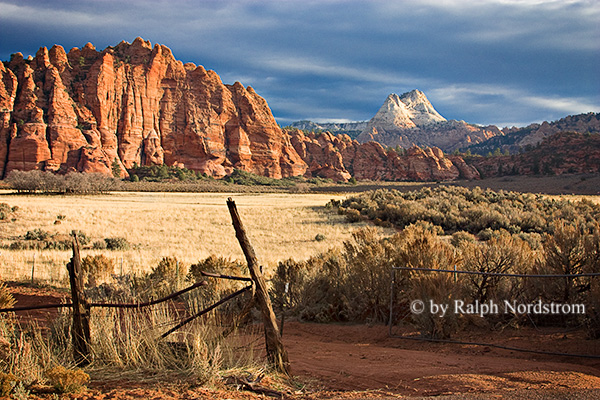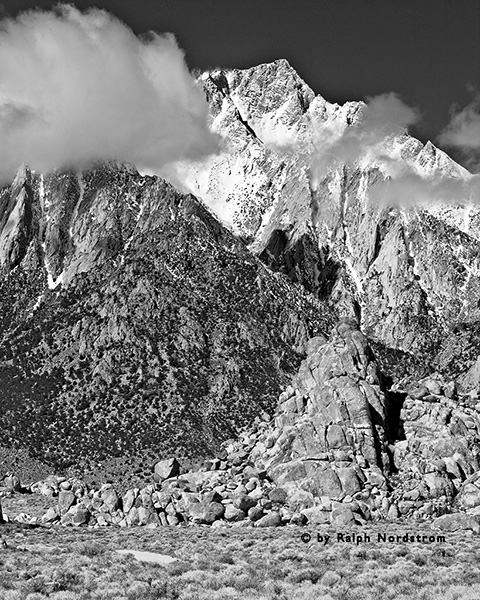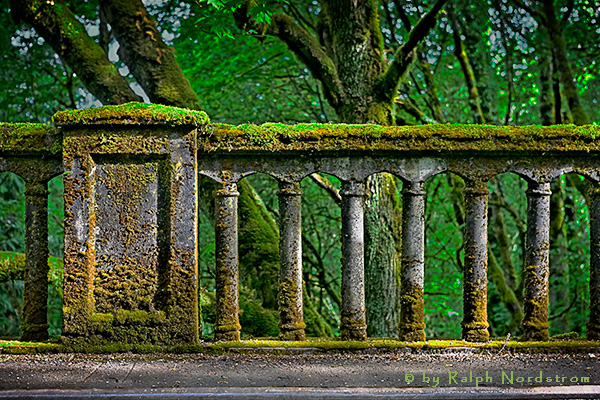Using Different Lenses
The single lens reflex camera (SLR), whether film or digital, allows the photographer to change lenses. And the selection of one lens or another can have a powerful impact on the message of a photograph. It’s more than wide angles giving you the grand picture and telephotos getting you up close and personal. There are other effects that lenses have on the final photograph.
Types of Lenses
There are three types of lenses – wide angle, normal and telephoto. Wide angle lenses are exactly what they say – they have the widest angle of view. They do indeed pull in the big picture. The normal lens is very close to the way we naturally see the world with our eyes. And telephoto lenses are like looking through a telescope. Everything appears greatly magnified and much closer.
Before defining the three lens groups in terms of focal lengths, let’s take a quick look at the difference be
tween 35mm film cameras and many digital SLRs. It turns out that most digital SLRs have sensors that are somewhat smaller than a 35 mm film frame. This has the effect of increasing the apparent focal length of all the lenses. So there is a factor you must multiply the lens’ focal length by to get the apparent focal length. For most Canons the factor is 1.6 and for most Nikons the factor is 1.5. For example, if you took a 50 mm lens and put it on a Canon digital SLR it would have an apparent focal length of 80 mm (50 * 1.6).
But let’s take a look at the different creative characteristics of these three groups of lenses.
Wide Angle Lens
A lens is considered to be wide angle if its apparent focal length is 35 mm or less. Some lenses go all the way down to 18 mm and even 12 mm. These extreme wide angles are called ‘fish eye’ lenses. Some of them have a field of view greater than 180 degrees (you have to be careful not to get your feet in the picture).
The wide angle lens is a favorite of many landscape photographers. So often we’re swept away by the grand vistas we experience and the best way to pull it all in is with a wide angle lens.
I’m always surprised when I look through a wide angle lens just how much of that’s before me is coming through the view finder. I look at the scene and then bring the camera up to my eye and I can take in so much more. In a very real way, then, a wide angle lens allows us to see the world in a way we could never see with our unaided eyes. Without the lens we would have to turn our heads from side to side to see it all but with a wide angle lens we can take in the expansive view all at once.
Perspective is altered with a wide angle lens. Objects that are close appear even larger while objects that are far away appear smaller. This is another way in which these images are different from what we actually see with our eyes.
Another thing that’s really great about wide angle lenses is the depth of field they have. Simply put, depth of field is the ability to have the entire scene before you in focus, from up close to you all the way out to infinity. This is a very strong characteristic of the wide angle lens. Photographers like to create ‘near/far’ compositions with these lenses. These images can have a great deal of depth and become as close to 3-dimensional as you’ll get on a flat piece of paper (or monitor screen).

One disadvantage of these lenses is a phenomenon called ‘pin cushioning’ or ‘barreling.’ The sides of the image become distorted and horizontal or vertical lines begin to bend and bulge. Also, if you get really close to someone’s face and take a picture, they will be all nose. These characteristics can be put to creative effect in the right circumstances.
Normal Lens
The normal lens is usually one with a focal length of around 50 mm. This lens comes the closest to presenting perspective the way we see it with our eyes. The relationship of nearby and far away objects looks ‘normal’ to us, hence the name.
Normal lenses are really good at capturing less grandiose scenes, ones that are a bit more modest. They’re good for taking a little bit closer look at things.
Also, they lack the distortion you get with very wide angle lenses.
Telephoto Lenses
Telephoto lenses have focal lengths that start at 100 mm and go up from there. The sky is the limit. A typical lens used by a landscape photographer would be 200 mm, maybe up to 300 mm. Wildlife photographers enjoy the power of 400 mm lenses and more, sometimes going all the way up to 1000 mm or even 2000 mm (if you have the BIG bucks).
The most obvious thing you notice when you look through a telephoto lens is it’s like looking through a powerful telescope. You can get really up close to your subject and still be a considerable distance away.
Distances are dramatically foreshortened. The components of your image seem laminated on top of each other. This produces more of a flat 2-dimensional effect. This is another departure from the way we normally experience with world and can produce some pleasant surprises.
Telephoto lenses can often produce more intimate compositions since they take in less of the scene. This can lead to tighter compositions that isolate and simplify the subject. This lens can produce opposite effects ranging from the drama of foreshorted distances to the delicate simplicity of an intimate scene.

Telephoto lenses have very narrow depths of field and this can be put to good use when doing close-up photography. Very often you want your subject (like a flower or a face) to be in focus and everything else to be out of focus. Telephoto lenses are ideal for this.
This brings up an excellent lens for portraits – the moderate telephoto lens. An 80 to 100 mm lens is perfect. You don’t have to be in the subject’s face and can still fill the frame with a nice, intimate shot.
Putting It All Together
We’re blessed these days with some really high quality zoom lenses. Some work mostly in the wide angle and normal range (like the 24-70 mm lens I use a lot) while others work in the telephoto range (like the 70-200 mm lens I also love). Personally, I like the idea of having two lenses to cover the range from wide angle to telephoto. The image quality is better.
However, there are some dynamite lenses such as 28-200 mm that cover it all. These lenses have the advantage of not having to swap lenses in the field (which exposes your sensor to dust). There are some nice, moderately priced lenses in this category with some moderate compromises to quality. There are some very high priced lenses in this same category with a much less compromise to quality. You get what you pay for.
But what I really want to leave you with is the magic effect your lens choice has on the way you see the world. I’m not talking about when you look through your camera’s view finder. I’m talking about as you’re walking about looking for subjects to photograph. The way you view the world changes with your choice of lenses. It’s true. If you don’t believe me, try this fun exercise.
Whatever lens you normally use, mount the other one on your camera. In other words, if you normally use a wide angle lens, put on your telephoto and vise versa. Then go outside and spend at least a half a day shooting. You’ll find that what the images you see actually change. You’ll find yourself looking at the world totally differently.
A similar exercise is to pick a single focal length and shoot all day with that one setting. A normal focal length (around 50 mm) is a good one to use for this activity, mostly because we don’t often shoot with a normal lens.
So, as it turns out, learning to use the characteristics of these different lenses can go a long way to expanding your creativity and giving you the voice to more fully express yourself through your photography.
(4869)

